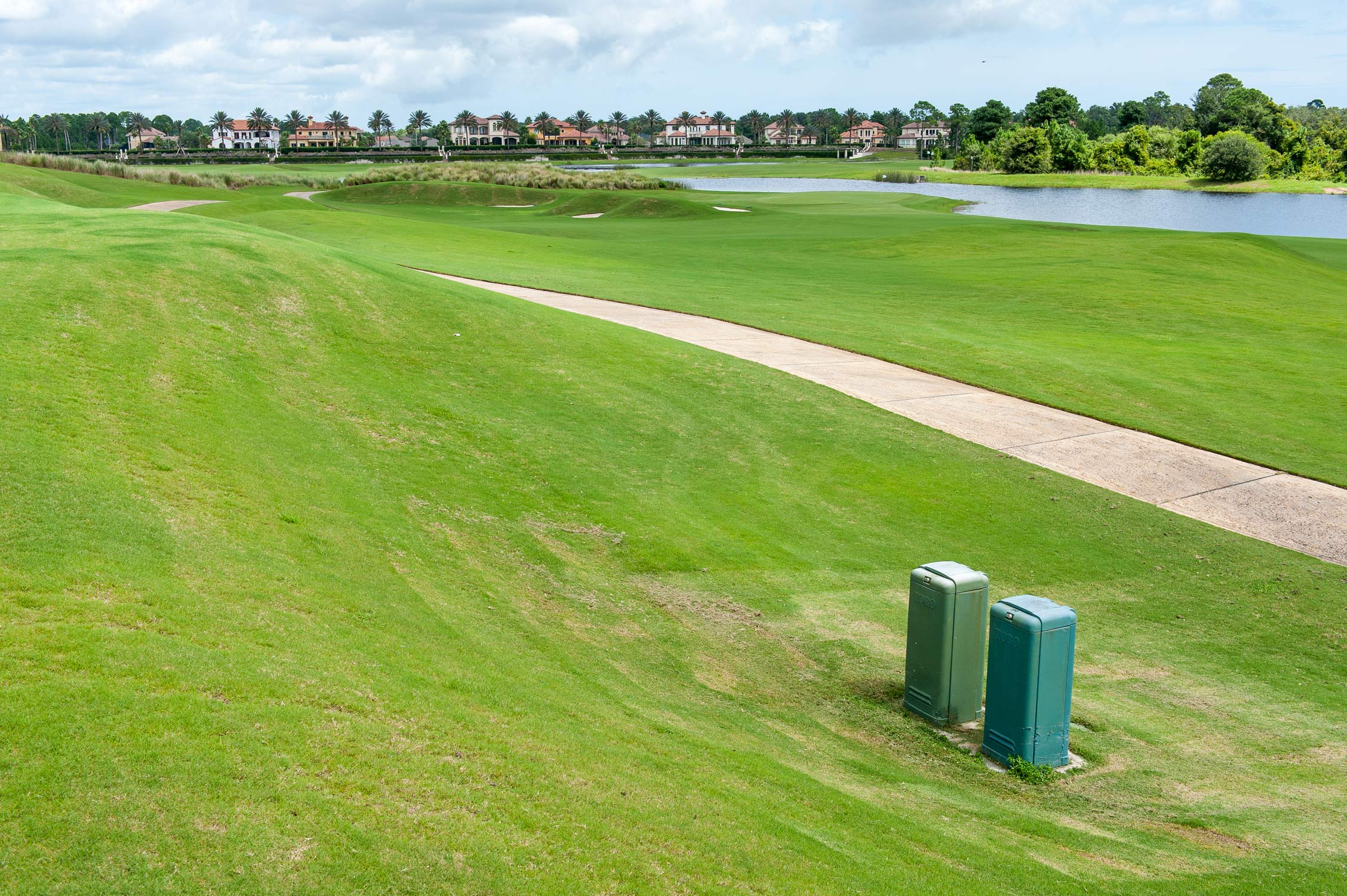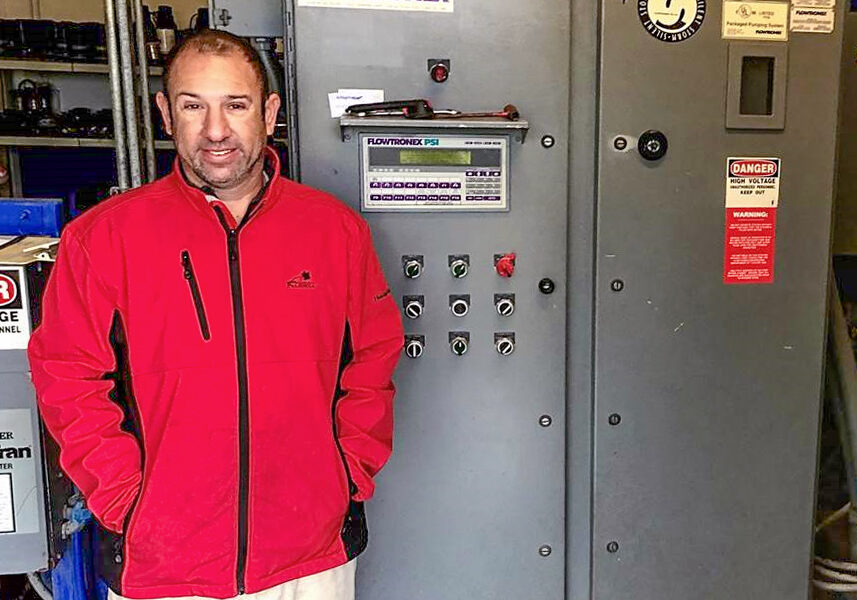Golf courses conserve while keeping greens gorgeous

Native and drought-tolerant plants hug the fairway and water features at The Palencia Club. In front right are two control units that help golf course staff monitor turf conditions.
New technologies and practices save water, enhance fairways
Green fairways roll gently toward a native tree line at The Palencia Club, an Arthur Hills-designed championship golf course and private club in St. Augustine, Fla. The grass is flawless, like a jade carpet beneath the Florida sun.
Adequate water sources are the lifeblood of Florida’s more than 1,250 golf courses, the most in any state. Lush greens can be a symbol of a well-managed golf course or, alternately, a waste of precious water resources.
Golf courses like The Palencia Club are proving that water-intensive recreational facilities and resource sustainability can coexist. Contrary to commonly held beliefs, recent studies show that many golf courses — especially those built or redesigned within the last decade — are among the state’s most efficient water users.
St. Johns River Water Management District regulatory staff work closely with golf course owners and developers to encourage designs that minimize impact on Florida’s underground water supplies. For example, the District requires golf courses to use the lowest-quality water available for irrigation, thereby reducing demand on potable (drinkable) water supplies.
“This requirement for golf courses reduces demand on drinking water supplies,” says Paula Presley, a hydrologist with the District’s Bureau of Water Use Regulation. “Our regulatory staff have successfully worked with many golf courses, such as Palencia Club, to convert water used for irrigation from potable water to reclaimed water, stormwater, or both. Since 2000, the District has issued about 200 consumptive use permits (CUPs) to golf courses and required all of them to incorporate water-conserving practices.”
The Palencia Club blends drought-tolerant native vegetation along its fringes with a high-tech sprinkler system and minimal turf. The community’s master developer — Hines — incorporated sustainable design throughout the golf course and the surrounding Palencia community.
“When we began looking at this project, we wanted to be comfortable with the ability to meet required environmental standards,” says Walter O’Shea, Hines’ managing director. “Operating from a sustainability platform…is really about managing business effectively. Efficiency gives us an advantage.”
Operating from a sustainability platform…is really about managing business effectively. Efficiency gives us an advantage.

The Palencia Club’s Golf Course Superintendent, David Levin, in the control room at the heart of the system to manage water use at the golf course.
The heart of the course is an irrigation system that draws most of its water from an 18-acre pond. Most of the water used to irrigate the course is recycled by capturing stormwater runoff in the pond and pumping it to the irrigation system. A backup well provides water during dry spells but is rarely needed.
The technology behind the sprinkler system allows The Palencia Club’s Golf Course Superintendent, David Levin, to adjust the performance of each of the 900 sprinkler heads individually to meet the varying needs of the course. Levin and his staff can operate sprinkler heads from a computer in the maintenance building or he can turn them on or off remotely with a handheld device. When necessary, he’ll hand-water finicky swatches of grass with a hose. Irrigation is an art for Levin and his art form could best be pegged as minimalism.
“You manage to the minimum amount of water that is needed,” Levin says. “A dry golf course plays better than a wet course. It costs money to run a pump station. You also have higher disease incidents when you overwater. Overwatering makes no sense at any level.”

